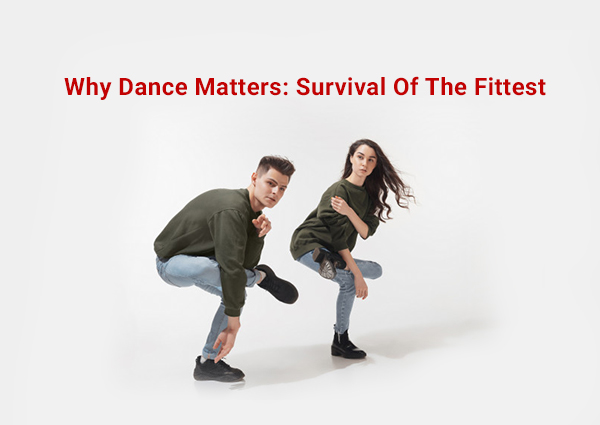Why Dance Matters: Survival Of The Fittest
In the following article we’ll mention an important topic that’s “Why Dance Matters: Survival of the Fittest” lets discuss about it:
The dance classroom is more than just a studio; it’s a laboratory. it’s the training ground for an unforeseeable future.In the age of standardised testing, arts environments can actually provide the safe havens where mistakes are really treated as discoveries as well as expression is actually celebrated. Higher order thinking is actually a natural part of the performance and students exit the stage smarter and more prepared for whatever life has in store for them. Dancers have an edge.
It Teaches Kids To think And Reply To The World Around Them.
Dance education can teach early learners to practice what’s usually reserved for older students in other academic subjects. Dance gives the liberty and permission for students to question and explore, “What if?”
From a simple movement strand to composition structure to the real study of alignment, the dance class is actually a constant set of negotiations which is happening in real time.
“What if I send my ribs this way”? “What if I actually emphasize the end of the port de bras instead not just the beginning”? “Moreover, what if the very next movement is actually faced upstage”?
Students learn theory and apply it immediately. Students assess their own bodies and actually adjust to find better balance and higher elevations. Goals are immediate, concrete, and progressive.
It Demands Focus.
The body is constantly engaged in physical experiments actually dealing with weight, time, and force with variables shifting day by day or maybe even hour by hour. Students need to be present and aware in a way that traditional classes wish they could actually engage.
The type of learning involved in dance study engages the entire child: physically, emotionally, and intellectually. As a result, it’s also an inclusive environment where students with all kinds of learning styles can have an equal chance for success.
The key for this, of course, is that we as educators recognize excellent dance students aren’t always the most technical dancers.
The more varied the kind of dance experiences- dance production, composition, history, dance science, management, notation, and so on- the more dynamic the lessons can actually be the more likely students of all types of learning styles can succeed as well as build confidence.
If we compare Bloom’s Taxonomy, a theory about learning styles divided into three main categories (cognitive, affective, and psychomotor), to general approaches to the creative process, we see that they’re virtually the same or identical.
Furthermore, the traditions of dance training innately apply these really sophisticated goals. Imagine what could actually be done with attention to teaching details that allow the students or scholars to see behind the curtain and have some input in how and why they produce dance.
Higher Order Thinking: Quite A Creative Process
Creating: Generating ideas and movement concerning a topic or story
Evaluating: Assessing which of these ideas as well as movement “make the cut”
Analyzing: Deciding how to actually structure the movement to best convey the meaning
Applying: Use this method to actually generate more ideas on a related point or supporting detail
Understanding: Comprehending on a deep level the sequence of movement and how it develops
Remembering: having the ability to re-create the dance, the process, and also the lessons learned
Creating dance, particularly when involved in the information gathering and decision-making aspects of dance-making, is actually a direct example of higher order thinking- the most valuable kind of learning.
Essentially, students are learning how to actually learn and how to really communicate. this is actually what kids need in order to be able to address a future world we can only dare to imagine now. This knowledge will set them free.
And what about the future when the students or scholars become the teachers? When “they” become “us”.
Dance has taught us to be life-long learners. We, as dancers, actually rely on the consistency of our training and also the daily conversations with our bodies to know what to do and actually how to proceed.
Dance matters because through it we actually know our minds, our bodies, and our spirits.
Dance matters because it demands that we actually set goals as well as see them through to our greatest extent.
Dance matters because it directs us to actually depend on ourselves.
Dance matters because it keeps us moving.

